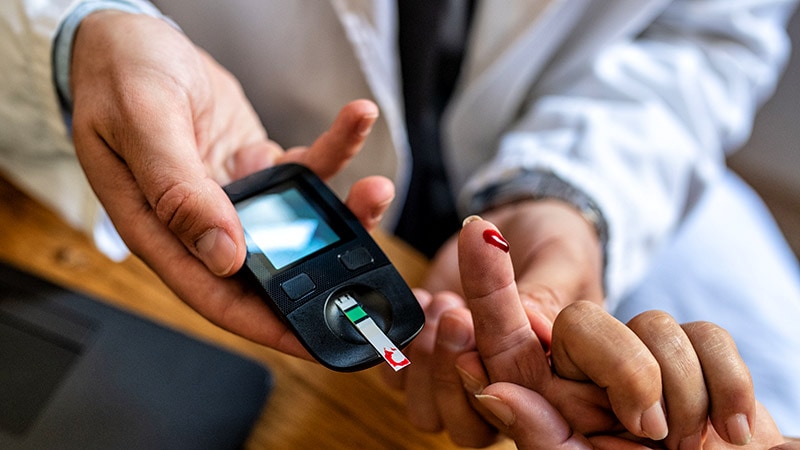Takeaway
- Adherence to treatment and a reduction in BMI was strongly associated with a lower HbA1c 1-year after diagnosis of childhood type 2 diabetes mellitus (T2DM).
Why this matters
- The trend of a higher prevalence of T2DM in youth and the rapid development of diabetes-related complications is worrying for the decades ahead.
Study design
- Study reported outcomes from a national cohort of children and adolescents (ages, <17 years) diagnosed with T2DM 1-year on from diagnosis through British Paediatric Surveillance Unit (April 2015-April 2016).
- Mean age at follow up was 15.3 years.
- Funding: National Institute for Health Research Translational Research Collaboration for Rare Diseases.
Key results
- There were 106 cases of T2DM between April 2015 and April 2016. Of these, 5 were lost to follow-up and 1 had a revised diagnosis.
- Median BMI standard deviation scores (SDS) was 2.81 (2.91 for girls and 2.7 for boys) with a decrease of 0.13 in BMI SDS at 1-year follow-up.
- Median HbA1c was higher in 2015 compared to 2005 (53 vs 48 mmol/mol); 38.8% achieved the HbA1c target of <48 mmol/mol (UK target); 1-unit increase in BMI SDS was associated with 34.9% increase in HbA1c.
- Compliance or attendance concerns (β coefficient=0.12; P<.0001) and BMI SDS change at 1 year (β coefficient=0.13; P=.007) were associated with HbA1c. Clinicians reported issues with compliance/adherence in 53% of cases.
- The mean clinic attendance was 75%, and the most common treatment at diagnosis (77%) and at 1-year was metformin (87%).
- Microalbuminuria prevalence at 1-year was 16.4% vs 4.2% at baseline and microalbuminuria of patients had higher HbA1c compared to those without (median 49 vs 60 mmol/mol; P=.033).
Limitations
- Clinician-reported concerns about compliance with treatment cannot be quantified.
References
References



